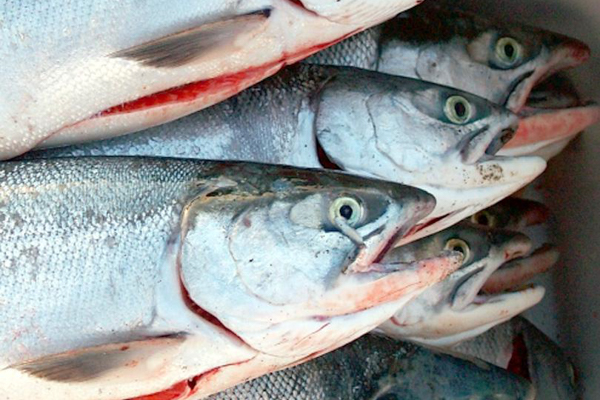
A weak run is again forecasted for Upper Cook Inlet sockeye, continuing a trend of poor runs that has fishermen worried about the future of the fishery.
“It unfortunately may be a harbinger of the future,” said Ken Coleman, a setnetter and vice president of the Kenai Peninsula Fishermen’s Association, which represents eastside setnetters. He’s among the commercial fishermen disappointed with the report released by the Alaska Department of Fish and Game Monday.
The forecast projects a run of 4.97 million sockeye in 2022. About 2.97 million of those fish, the forecast said, will be available for harvest by all users.
The forecasted run is weak by historical standards. The inlet’s 20-year average is about 6 million fish.
But runs over the last few years have been below that. The sockeye run in 2020 was so bad that the U.S. Secretary of Commerce declared it a disaster, along with several other Alaska fisheries.
In its request for help from the federal government, the state cited changing ocean conditions as a reason for the drop. Fishermen also criticize Fish and Game for over-escaping the Kenai River with sockeye several years in a row, which they said can cause poorer runs down the road.
Managers said that might be true. But they also said they’re following their management plan to conserve struggling king salmon.
Coleman worries that plan will put sockeye in peril, too.
“We’re trying to protect one stock, but we may be harming the other one — the sockeye — as part of that regime,” he said. “And then you’ve got two stocks in peril. It’s a difficult management issue to juggle, quite frankly.”
The Kenai and Susitna River forecasts are also below average for 2022. And the sockeye projections come at the heels of a dismal king forecast. The Department of Fish and Game, predicting a low late run of about 16,000 large kings, is limiting the sport fishery to retention only in July.
Ray DeBardelaben owns Long Live the Kings lodge in Soldotna and is president of the Kenai River Professional Guide Association.
“We have to do the best what’s for the fishery,” he said. “And at this point, we’re going to go out and try to catch some sockeye. And if there are available king trips, we’ll go fishing. If not, we’ll go with plan B.”
Brian Marston, Fish and Game’s area manager for Upper Cook Inlet commercial fisheries, said the fish forecasts are not to be taken as gospel. There is some information about the runs that the department can only glean once those runs pick up.
“The one thing that this forecast doesn’t do — and never does — is it doesn’t predict run timing,” he said. “That can significantly change the way we manage the fishery. But we won’t know that until in-season numbers come in.”
Last year’s sockeye run performed better than expected, with nearly 6 million fish. Commercial fishermen, who netted about 1.4 million sockeye that year, largely considered it a below-average season.
Meantime, there are multiple lawsuits in motion over the management of the commercial fishery.
A coalition of fishermen took state fishery managers to court in 2019, alleging the Dunleavy administration was deliberately putting commercial fishermen out of business in favor of sportfish interests. That same group of fishermen is suing the federal government over a 2020 decision to close a large swath of Cook Inlet to commercial salmon fishing, which goes into effect this summer.
[Sign up for Alaska Public Media’s daily newsletter to get our top stories delivered to your inbox.]




